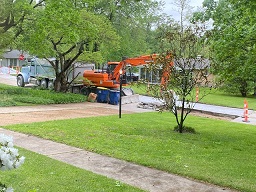 As I was watching my street being repaired by replacing sections of concrete, it made me think about processes. This has been ongoing for about a month, so I’ve grown accustomed to watching the repetitious series of the steps of their process, waiting for the next step.
As I was watching my street being repaired by replacing sections of concrete, it made me think about processes. This has been ongoing for about a month, so I’ve grown accustomed to watching the repetitious series of the steps of their process, waiting for the next step.
A process is a series of actions that end when the last step in the process is complete. For each section of concrete, the steps of the process are the same. It begins with the first step of placing cones around the section, or sections that need to be replaced.
The next step is to jackhammer the concrete to break the section into smaller chunks. The excavator operator then scoops up the chunks and carefully deposits them into an awaiting dump truck as the next step.
The precision of this heavy equipment operator is impressive! I imagine that if he drops chunks of concrete on existing sections, he could do some damage. The damage would need to be repaired, cause delays and slow down the progress of the overall project.
As the excavator operator removes the concrete chunks, he also levels out the ground to prepare for the next step, which is laying a foundation of gravel. Then the forms are set to separate the sections.
The last steps to complete this process include pouring concrete, and leveling and finishing the section, or sections.
Each step is dependent on the previous step to continue the process until completion. The order of the process is important. It makes sense. You couldn’t pour new concrete until you break up the old sections and remove the debris, right?
That’s how a process works. It’s a series of next steps to get a task or a project done. It’s automation at its finest, and an efficient and productive way to get things done.


